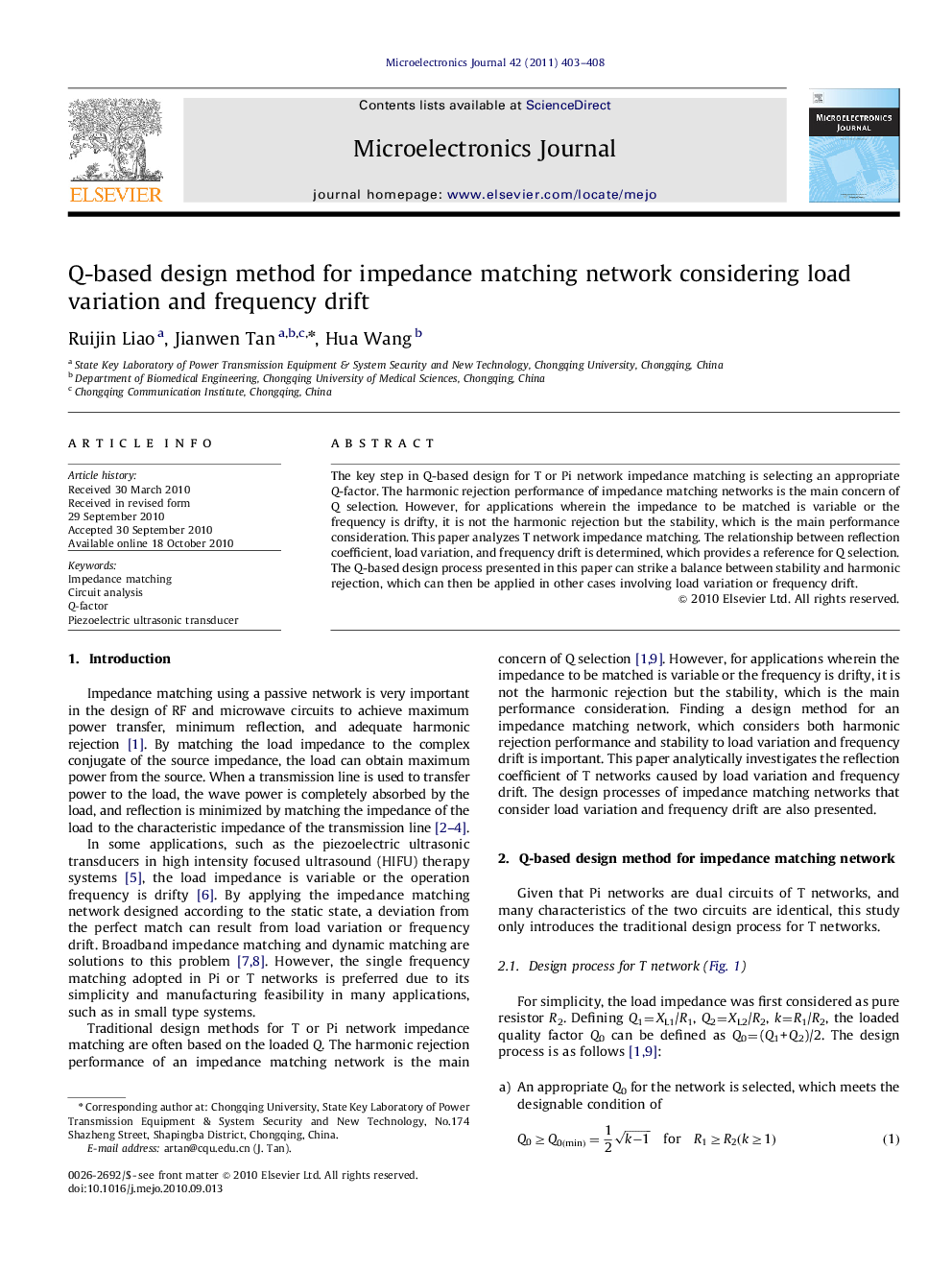| Article ID | Journal | Published Year | Pages | File Type |
|---|---|---|---|---|
| 10364454 | Microelectronics Journal | 2011 | 6 Pages |
Abstract
The key step in Q-based design for T or Pi network impedance matching is selecting an appropriate Q-factor. The harmonic rejection performance of impedance matching networks is the main concern of Q selection. However, for applications wherein the impedance to be matched is variable or the frequency is drifty, it is not the harmonic rejection but the stability, which is the main performance consideration. This paper analyzes T network impedance matching. The relationship between reflection coefficient, load variation, and frequency drift is determined, which provides a reference for Q selection. The Q-based design process presented in this paper can strike a balance between stability and harmonic rejection, which can then be applied in other cases involving load variation or frequency drift.
Related Topics
Physical Sciences and Engineering
Computer Science
Hardware and Architecture
Authors
Ruijin Liao, Jianwen Tan, Hua Wang,
